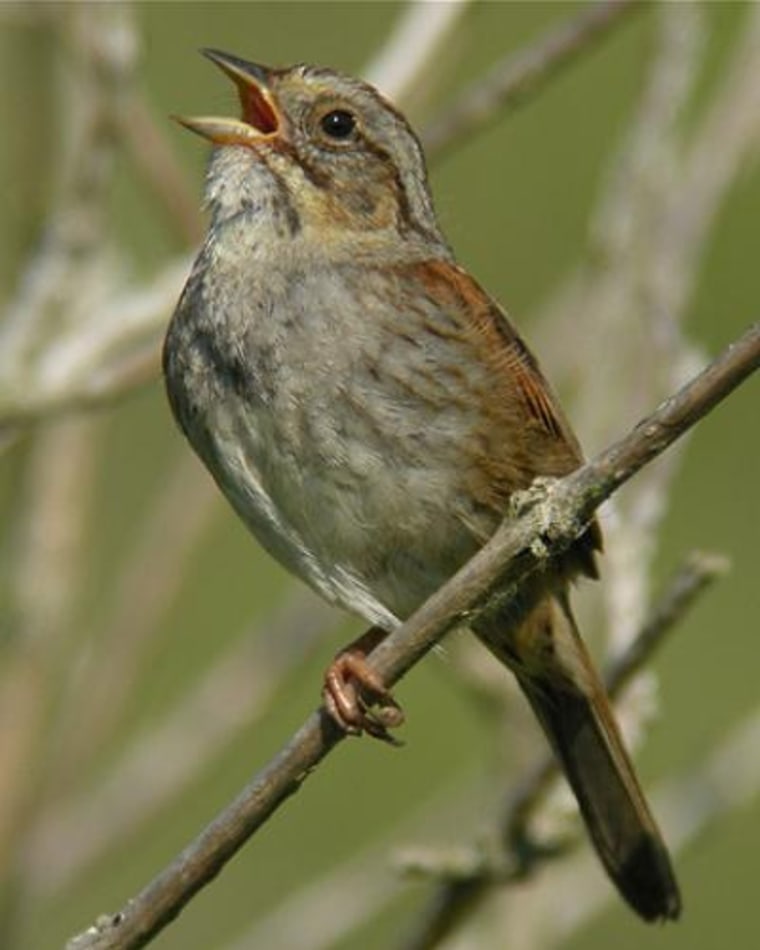Fish aren't known for their impressive singing ability, although some can grunt and hum, yet singing originated in lungfish, according to new research that also determined how songbirds consistently produce melodious, sweet tunes.
In the future, the findings may lead to better human singing, as well as improved treatments for speech impediments, since humans and birds sing using similar techniques.
"Babies go through several phases of learning before they fully speak -- like babbling, one word, two words, etc. -- and so do songbirds," co-author Tobias Riede told Discovery News.
Riede, a researcher at the National Center for Voice and Speech, explained that young songbirds also "babble," producing sub-songs, before they create more varied "plastic" songs and then graduate to bird crooning perfection with their adult songs.
"Both babies and songbird chicks need a tutor or they don't pick up the adult version," he added. "Part of that learning is exercising motor patterns."
Riede and colleague Roderick Suthers focused on one such motor pattern, articulation, to explore the origins of singing and how birds, in particular, make their sounds.
They placed white-throated sparrows in an X-ray machine at Indiana University and watched the inside of each bird's throat area as it sang. The sparrow's song is often described by birdwatchers as, "Oh sweet Canada, Canada, Canada," since it resembles a few notes in the Canadian national anthem.
It's a rather monotonous bird song, however, which is why the scientists chose to study this avian species. The researchers previously conducted a similar study on northern cardinals, which sing a much more complex-sounding ditty.
The X-rays showed that, for both types of birds, sound is produced in the syrinx, their voice box, and is then modified by the upper vocal tract and beak movements. Air volume adjustments in the vocal tract region, along with throat vibrations in sync with the fundamental frequency, or pitch, of each note, appear to be key to bird singing perfection.
The findings have been accepted for publication in the Journal of Comparative Physiology.
"The shape and size of the (throat resonance) cavity determines the acoustics," said Riede. "A large cavity supports lower frequencies and a smaller cavity supports the higher frequencies. The bird who sings through high and low notes has to constantly adjust its vocal tract cavity."
Suthers added that the coordination also increases song volume.
"This might give males an advantage in attracting females and defending territory," Suthers explained.
Since white-throated sparrows share the process with northern cardinals, it's now believed that the singing technique is widespread in all songbirds, whether they produce fast, slow, complicated, or simple songs.
The scientists additionally now believe that beak and throat movements in birds, as well as mouth, tongue and lower jaw motions in humans, originated in fish.
"The pattern started to evolve when lungfishes started to gulp and swallow air," he explained.
In other singing news, University of Miami researchers Bill Searcy and Adrienne DuBois recently discovered that male songbirds, such as the swamp sparrow, can escalate their vocal performance by increasing the frequency range and speed of their songs.
Similar to human contestants on shows like "American Idol," songbirds can exceed their expected potential in the heat of competition.
"Even in the case of signals whose properties are physically constrained to reflect an individual's abilities, animals exaggerate their signals as much as they can during critical situations," Searcy said.
